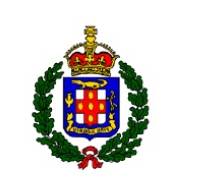A Clarendon taxi driver who yesterday testified in the Home Circuit Court that he saw the three policemen accused of the murder of Andrew Bisson dragging his body by his hands and feet from his house, after hearing several gunshots, maintained that one of the three cops is known to him as Chucky Brown.
However, the accused — Detective Corporal Kevin Adams, District Constable Howard Brown, and Constable Carl Bucknor — who are jointly charged with the September 5, 2011 murder of Bisson in Cornpiece district, Hayes, Clarendon, were never formally identified by the witness in any identification parade.
The men were instead identified by the witness, from the dock for the first time yesterday. The witness told lead prosecutor Caroline Hay during his evidence-in-chief that the accused were the same three policemen who went into Bisson’s house on the day he was killed.

The witness, who appeared scared from the moment he took the stand, also told the court that he knew the cops for about two years, but only by their aliases.
He said Adams was known to him as “Chucky Brown” and Gaza Man, and Bucknor as Addi, much to the amusement of the defence lawyers.
Addi is a nickname given to incarcerated dancehall deejay Adidja Palmer, better known as Vybz Kartel.
Queen’s Counsel Valerie Neita-Robertson took the witness to task over his identification of her client as Chucky Brown during her cross-examination.
Recently Constable Collis Brown, who is also known by the sobriquet “Chucky”, and who was assigned to the Clarendon Police Division, was convicted on three counts of murder, conspiracy to murder and wounding with intent.
“Was that the truth when you told INDECOM [Independent Commission of Investigations] that you recognised two of the police officers as Chucky Brown and Gaza Man?” Neita-Robertson asked the witness.
“Yes, ma’am, at the time,” the witness answered.
“I am going to suggest to you that the man is not known as Chucky, that is not the truth,” Neita-Robertson said.
“That is the truth,” the witness quickly answered.
The attorney then suggested to the witness that he was not being truthful, but this was denied by him.
The taxi driver also came under pressure about a fake name that he had used during the signing of three of five statements which he gave to INDECOM.
The witness admitted under cross-examination that he had used a fake name when he gave his first three statements, one in September 2011, and the others in March and July 2014.
He further acknowledged that prosecution learnt about his correct name for the first time this month when he gave two further statements in his correct name on November 5 and 22.
“I am going to suggest to you that you are a witness of convenience, you make up the story,” Neita-Robertson said.
“I was there,” the witness answered.
The lawyer also questioned the witness about the dissimilarity in the handwriting of the signatures on the statements submitted, but the witness, while agreeing that they looked different, insisted it was all his handwriting.
Earlier, during his evidence-in-chief, the witness recounted what occurred on the day Bisson was killed.
He said that he had gone to a garage in the district, which was on the property where Bisson lived in a one-room board house.
He said he went to get his car fixed but while there he saw about two unmarked vehicles and a police jeep arrive with about 18 policemen and women, including the three accused.
The witness testified that the three accused then went into Bisson’s house, took out about eight young men and placed them on the verandah and started questioning them.
While there he said they pointed to Bisson and asked who he was. He identified himself and was taken back inside the room.
The witness said he overheard Bisson saying “Mi daddy a police,” but one of the cops said “Mi nuh care yuh daddy a wha, yuh a go dead” and then he heard explosions.
The witness said that shortly after he saw the policemen coming out of the house and they asked him who drove a vehicle that was in front of the house. He was told to move the vehicle after he indicated that it belonged to him.
He further told the court that the police reversed the jeep into the driveway and that the men dragged Bisson’s body out of the house by his feet and hands, threw him into the jeep and left, as residents had started to gather on the scene and were making noise. He also said that the police took the young men who were placed on the verandah.
The court also heard from the witness that on the following day the three men returned to the house and he saw them “digging and scratching down the house like fowl”.
The trial will continue today before Chief Justice Bryan Sykes with the witness undergoing more cross-examination.
